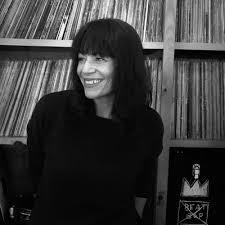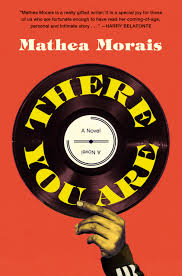How To Develop Music As Its Own Character In A Story

Singer, activist Harry Belafonte says, “Mathea Morais is a really gifted writer. It is a special joy for those of us who are fortunate enough to have read her coming-of-age, personal and intimate story of a time in St. Louis circling the death of Michael Brown.”
The book is a 2019 PEN America Literary Award nominee, and Kirkus called it “a novel that effectively intertwines ruminations on race, music, romance, and history.”
All my life I have loved two things. I’ve loved reading books and I’ve loved listening to music. As I started to move from being only a reader to becoming a writer, I looked to music to guide me, to help me access the stories that certain songs always signaled in my head. I created playlist after playlist to guide me through plot lines and character arcs. But what I could not do, no matter how hard I tried, was find a way to bring music into the story.
I tried adding lyrics to scenes but it never worked. Picture writing about a character sitting in her car, digesting the loss of her best friend to a drug overdose, when Neil Young’s “Only Love Can Break Your Heart” comes on the radio and brings her to her knees.
And now picture that this scene is broken up with italicized lyrics with line breaks “When you were young and all alone/How did it feel to be alone?” Even if you know this song, even if you can hear it in your head, the emotion you created is gone (And if you don’t know the song, you’re likely to close the book and move on.)
What I knew I needed to do was find a way to bring music into scenes without saying “Hey, I’m music,, look at me! I”m here to make you feel something!” But how? And how to do it without having to to convince your agent and/or editor that the royalty fees to use those lyrics will be worth it? So, I went back to what had been written before. Who had used music in their fiction and done it right? Who had done it wrong?
Sadly there are plenty of examples of what doesn’t work – but this just reinforced my belief that I wasn’t the only writer out who knew about the connection between words and stories, who was searching for a way to create that link on the page. There were also those who did it right. James Baldwin’s in Another Country is to me an example perfection (in all ways, not just in how it incorporates music into a story). Another is Lisa Ko’s The Leavers and Leesa Cross-Smith’s Whiskey and Ribbons. All of these novels found ways to bring music in carefully, without shouting. It has absolutely been done.
When I sat down to write a novel about a record store that included numerous characters who had turned to different kinds of music throughout their respective lives, I went back to these authors who had so deftly put music into their narratives. Initially, I was held up by the fact that each of these novels is focused around a character who is a musician and so music is naturally a part of that character.
My characters weren’t musicians, they were music-heads, record collectors. And if you know someone like this, you know they eat, sleep, and breathe music in a very different way than musicians do. You also know that they fancy themselves as very, very cool. If I was going to have any credibility with them as readers, I had to bring music to the page in a way that reflected that coolness. This meant there couldn’t be a moment of corniness or cliche.
I tried, failed, and tried again. It wasn’t until I realized that music needed to be like the other main characters that I began to see how I could make it work. If music was a character, a main character, then it needed to always be there – or about to be there, or about to leave. And like any important character, we needed to see and feel how it related to and how it impacted others in the story.
We needed to see the thread it weaved as it moved from place to place, from beginning of the story to the end. And like a character, it needed to be present in all its forms, with all its flaws. It couldn’t just appear at the beginning of each chapter or as a title, or a quoted lyric. Sure, sometimes there needed to be quoted lyrics, and a chapter title could also be cool, but sometimes all that was needed was simply a reference to a certain part of a certain song. Sometimes only the feeling another character felt when it entered the room.
While I’m sure my method of creating the character of music didn’t leave my novel cliche free, it did help me find a way to reflect the idea that, like others in our life, music can mean something different to each person. Maybe I love a song, a person, that someone else can’t stand and that’s okay, that’s real. And in the end, realness is the antithesis of cliche.
So going back to that character in the car. The one who is processing what it means to have lost her friend to a drug overdose. Perhaps she turns on the radio and Neil Young’s voice, twinged with pain, comes through her sand filled speakers and asks her how it felt when she was young, when she was alone.
—
Mathea Morais grew up in St. Louis and earned a degree in Literature from NYU. She began her career writing about hip hop culture and music for The Source and Trace Urban Magazine. She is the Director of the Noepe Center for Literary Arts on Martha’s Vineyard and has taught creative writing to children and young adults for over fifteen years.
Find out more about her on her website https://www.matheamorais.com/
Follow her on Twitter @matheamorais
 Growing up in the ’80s and ’90s in St. Louis, Octavian Munroe and Mina Rose found a future in music. Between the stacks at Rahsaan’s Records, the two fell in love to the sounds of Prince and A Tribe Called Quest. But in the wake of grief and heartbreak, they drifted apart, ultimately leaving the city for fresh starts.
Growing up in the ’80s and ’90s in St. Louis, Octavian Munroe and Mina Rose found a future in music. Between the stacks at Rahsaan’s Records, the two fell in love to the sounds of Prince and A Tribe Called Quest. But in the wake of grief and heartbreak, they drifted apart, ultimately leaving the city for fresh starts.
Decades later, Rahsaan’s Records is closing for good. Seeking closure of their own, Octavian and Mina travel homeward, reckoning with the ghosts of the past they left behind and the uncertain future they must create.
Insightful and nostalgic, There You Are is a wise novel of love, loss, and the power of community, backed by a phenomenal soundtrack of hip hop, soul, and jazz.
Category: Contemporary Women Writers, How To and Tips






























